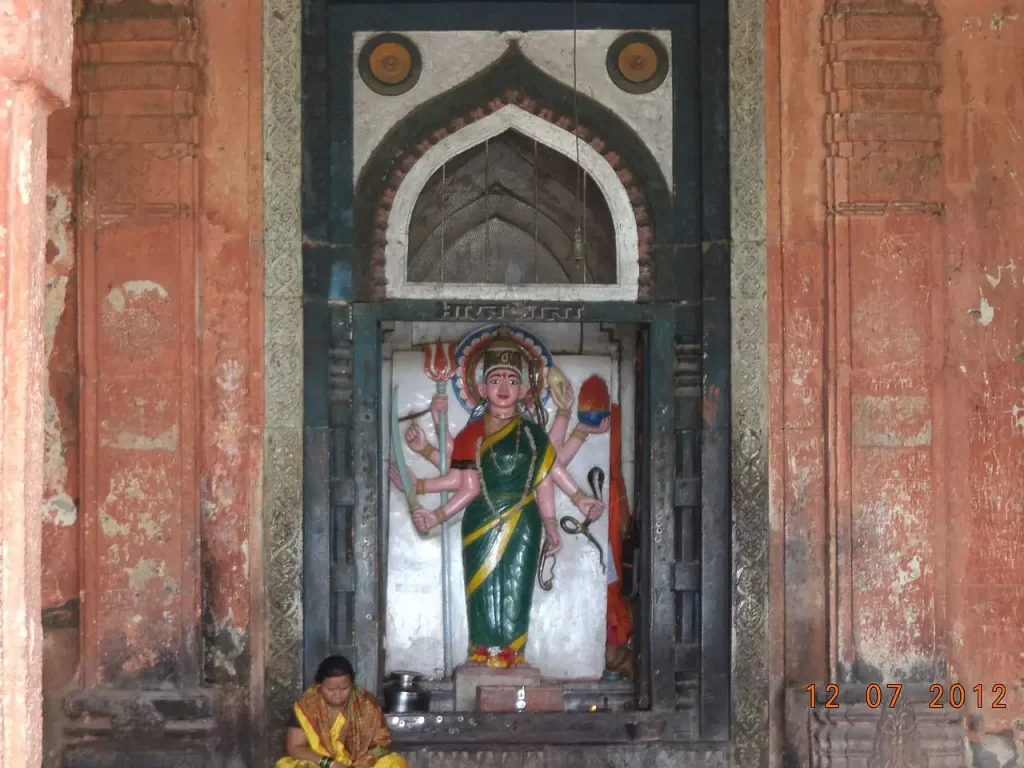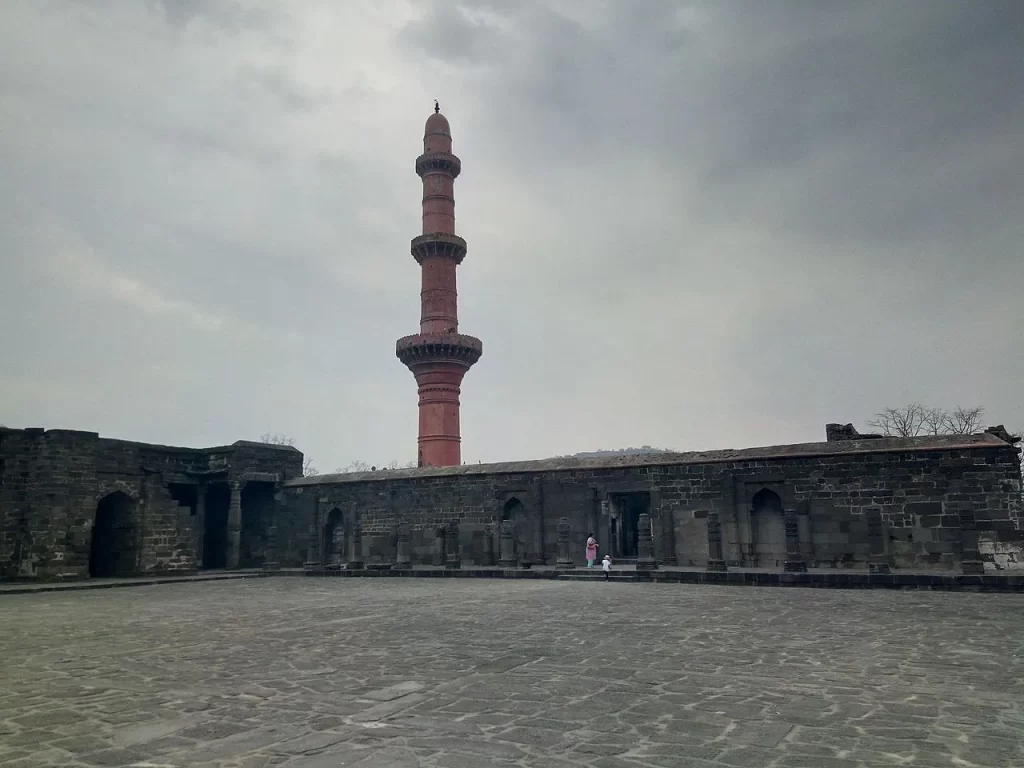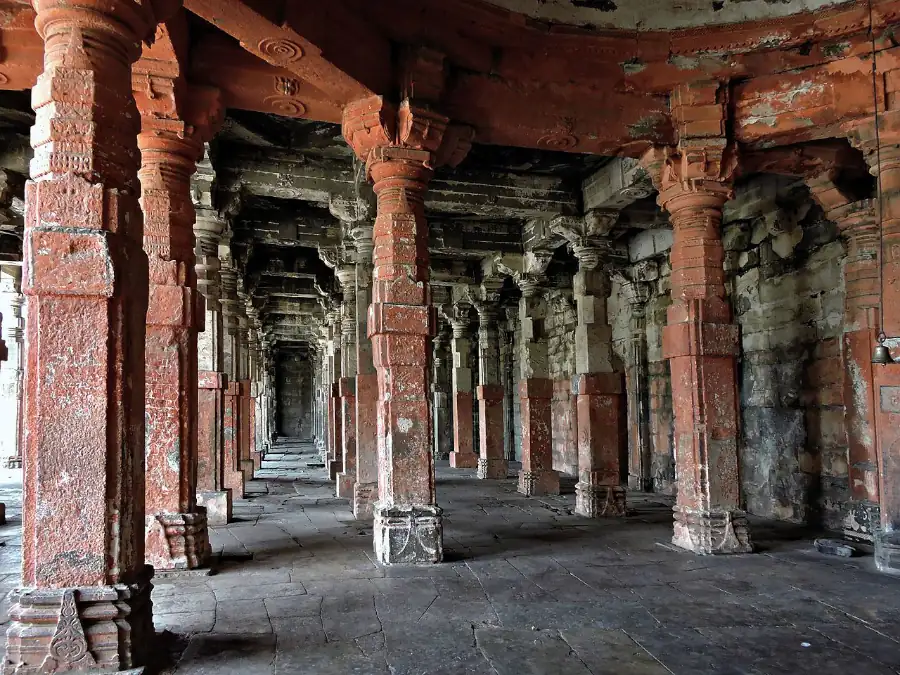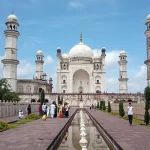Bharat Mata Temple, Daulatabad Fort: Where History Meets Devotion
Discover the Bharat Mata Temple at Daulatabad Fort—a saga of Jain, Islamic, and Hindu heritage. Explore history, architecture, and travel tips for Aurangabad’s crown jewel!
➤ Introduction: The Legacy of Daulatabad Fort
Nestled 16 km northwest of Aurangabad, Daulatabad Fort is a marvel of medieval engineering and a testament to India’s turbulent history. Perched on a 200-meter-high conical hill, this UNESCO-listed site has witnessed the rise and fall of dynasties—from the Yadavas to the Mughals—and houses the Bharat Mata Temple, a symbol of resilience and cultural reclamation.
But what makes this temple unique? Originally a Jain shrine from the 6th century CE, it was converted into the Jama Masjid during Islamic rule, only to be restored as a temple dedicated to Mother India in 1948. Today, it stands as a bridge between eras, blending Hindu, Jain, and Islamic architectural motifs.

➨ Key Highlights
⦿ Historical Significance: A 1,500-year-old site of Jain worship, later repurposed as a mosque, and finally reclaimed as a temple.
⦿ Architectural Fusion: 152 intricately carved pillars, Chalukyan emblems, and Indo-Islamic domes.
⦿ Strategic Location: Part of the Daulatabad Fort complex, a fortress deemed “invincible” for centuries.
Uncover the layers of faith, politics, and architecture at Maharashtra’s iconic landmark
Also Read
Bhambavli Vajrai Waterfall, Satara, Maharashtra: India’s Natural Wonder
➤ History: From Jain Temple to Bharat Mata Mandir
➨ Ancient Origins (6th–12th Century CE)
The site began as a Jain temple during the Chalukyan era, evidenced by pillars engraved with the Kirtimukh emblem and terracotta-colored stonework. Ibn Battuta, the 14th-century traveler, described Daulatabad (then Devagiri) as a city rivalling Delhi in grandeur.
➨ Islamic Conquest & Conversion (14th–18th Century)
In 1318, Delhi Sultanate ruler Qutb-ud-din Mubarak Khilji demolished the temple to build the Jama Masjid, repurposing 106 pillars from Hindu and Jain structures. The mosque served as a religious centre until the 1940s.
➨ Reclamation & Restoration (1948)
Post-India’s independence, leaders like Sardar Patel and K.M. Munshi spearheaded the temple’s shuddhi (reconversion). To avoid communal tensions, an idol of Bharat Mata (Mother India) was installed, symbolising unity over sectarianism.

➤ Architecture: A Tapestry of Cultures
➨ The Pillared Hall
⦿ 152 Stone Pillars: Carved in the Himar Panti style (interlocking stones without mortar), these pillars once supported a flat roof, later modified with a dome during Islamic rule.
⦿ Chalukyan Motifs: Look for the Kirtimukh (lion-faced) engravings on beams—a signature of Chalukyan craftsmanship.
➨ The Dome & Courtyard
⦿ The central dome, added during mosque construction, contrasts with the temple’s original mandapa (hall) layout.
⦿ A vast courtyard, typical of Jain temples, now hosts devotees celebrating festivals like Republic Day.
➨ Nearby Structures
👉 Chand Minar: A 65-meter victory tower mirroring Delhi’s Qutub Minar, built by Bahmani Sultan Ala-ud-din in 1435.
👉 Chini Mahal: A Mughal-era prison adorned with Chinese tiles, where Aurangzeb imprisoned Golconda’s last king.

➤ Distance from Major Cities
| City | Distance (km) | Travel Time |
| Aurangabad | 30 km | 45-minutes |
| Nashik | 170 km | 3–4 hours |
| Pune | 235 km | 4–5 hours |
| Mumbai | 340 km | 6–7 hours |
| Hyderabad | 560 km | 9–10 hours |
Tip: Combine your visit with the Ellora Caves (30 km away) for a full-day historical tour.
➤ How to Reach Bharat Mata Temple
➨ By Air
⦿ Nearest Airport: Aurangabad Airport (30 km). Pre-book taxis for a 45-minute drive.
➨ By Train
⦿ Aurangabad Railway Station: Hire an auto-rickshaw to Jai Vishwa Bharti Colony (20 mins, ₹80–100).
➨ By Road
⦿ From Mumbai: Take NH160 via Nashik (6-hour scenic drive).
⦿ Local Buses: MSRTC buses run hourly from Aurangabad Bus Stand to Daulatabad Fort .
➤ Best Time to Visit
⦿ October–February: Pleasant weather (15–28°C), ideal for climbing the fort.
⦿ Monsoon Avoidance: Slippery pathways make the Andheri tunnel hazardous.

➤ Things to Do at Daulatabad Fort
👉 Explore the Andheri Tunnel: Navigate this pitch-dark, spike-lined passage used to trap invaders.
👉 Climb the Chand Minar: Though entry is restricted, the exterior offers stunning photo ops.
👉 Admire the Cannons: Spot Aurangzeb’s Mendha Tope (Ram-shaped cannon) near Chini Mahal.
➤ FAQs
Is the Bharat Mata Temple free to enter?
Yes, but Daulatabad Fort charges ₹25 for Indians and ₹300 for foreigners.
Can I take photos inside the temple?
Yes, but avoid flash near the idol.
Are guides available?
Licensed guides charge ₹500 – ₹800 for a 2-hour tour.
➤ Conclusion: A Monument of Resilience
The Bharat Mata Temple is more than a religious site—it’s a chronicle of India’s layered past. From Jain ascetics to Mughal emperors, each era left its mark, culminating in a tribute to national unity. As you walk through its pillared halls, remember Sardar Patel’s vision: an India where history is honoured, not erased.
Plan Your Visit: Pair this temple with Ellora’s Kailasa Cave for a spiritual-historical deep dive!
Ready to step into history? Share this guide with fellow travellers or book your Aurangabad trip today! 🛕✨
➤ Sources
1. Reclaim Temples: Reclaiming of the Hindu Temple at Daulatabad Fort
2. Indian Culture Portal: Daulatabad Fort History
3. Thread by @Jainismrevival: Jain Heritage of Daulatabad
4. ASI Archives & Tourist Guides
Image Credit
1. Wikimedia Commons – DAULATABAD FORT- BHARAT MATA STATUE
2. Wikimedia Commons – Chand Minar behind Bharat Mata temple
3. Wikimedia Commons – From the topmost of Daulatabad fort- Front View
4. Wikimedia Commons – Stone columns and roofing
For more information, you can visit our website: ExploreXP
Latest Posts
- Bibi Ka Maqbara Aurangabad – Entry Fee, Timings, History, Built by, Images, Location & more

- Bhusawal – Maharashtra’s Hidden Gem of Culture and Commerce

- Bharat Mata Temple, Daulatabad Fort – A Journey Through History & Spirituality

- Bhambavli Vajrai Waterfall, Satara, Maharashtra: India’s Natural Wonder

- Bhadra Maruti Temple Khuldabad, Chhatrapati Sambhaji Nagar (Aurangabad) – Divine History and Travel Guide

- Begusarai – Industrial Hub of Mithila Heritage

